Follow Us:
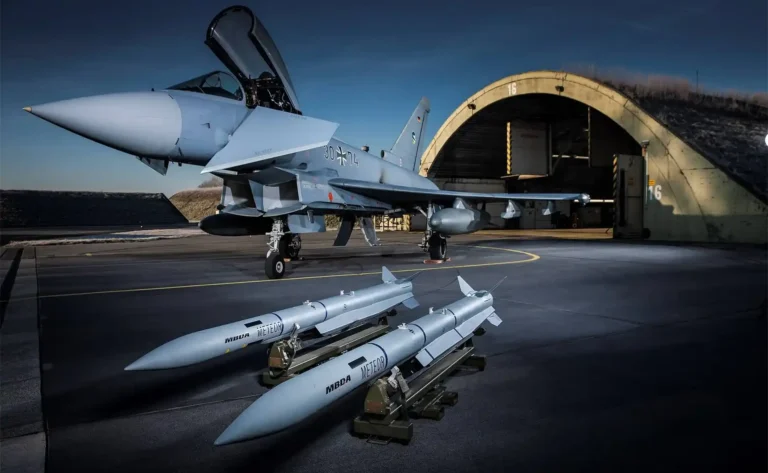
Share
The Sukhoi Su-75 Checkmate is an advanced, fifth-generation light tactical fighter jet currently under development by the Russian aerospace company Sukhoi.
Designed with cutting-edge technology, this single-engine aircraft is engineered to deliver superior performance while maintaining low operational costs, making it an attractive option for domestic and international markets.
The Checkmate was first revealed to the public during the MAKS 2021 International Aviation and Space Salon in Zhukovsky, Russia, held in July 2021. Its global debut occurred later that year at the Dubai Airshow, marking the first time the aircraft was showcased outside Russia.
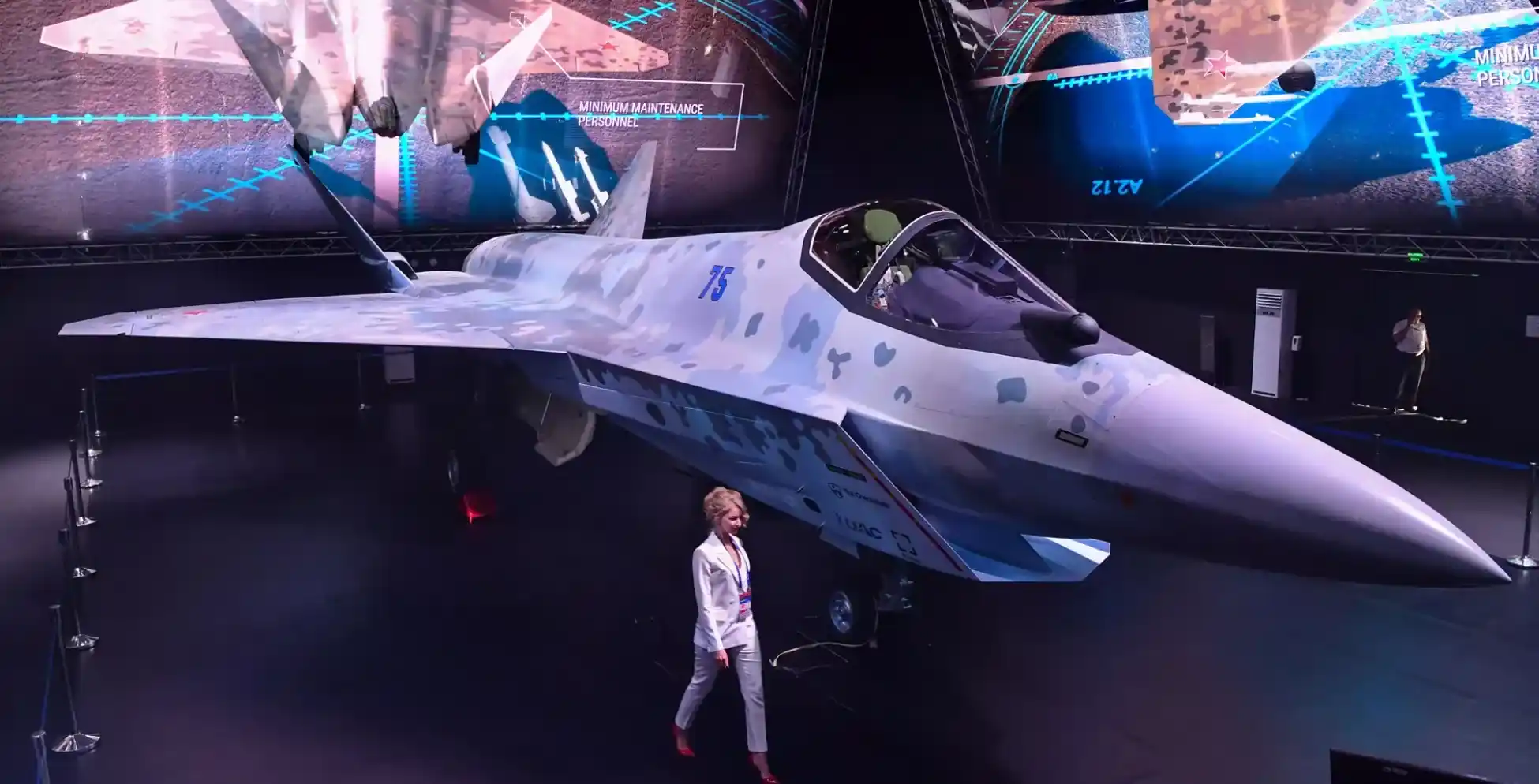
Sukhoi plans to conduct the maiden flight of the Sukhoi Su-75 Checkmate in 2023 following extensive ground testing. Full-scale production is expected to commence by 2026.
The jet will be produced for the Russian military and exported to international clients, with projections suggesting that around 300 units will be built for export over the next 15 years.
At the 2021 MAKS air show, a static, non-flying prototype of the Sukhoi Su-75 Checkmate was unveiled, with Russian President Vladimir Putin in attendance.
Originally, the jet’s first flight was planned for 2023 but was postponed to 2024 and further delayed to 2025. Initial deliveries are now anticipated between 2026 and 2027.
Designed as a cost-effective fighter jet for export markets, the Checkmate aims to compete with other light to medium-weight aircraft, such as the Lockheed Martin F-35 Lightning II and the Shenyang FC-31. Production forecasts estimate that 300 units will be manufactured over 15 years.
Rostec’s CEO, Sergei Chemezov, stated that each Sukhoi Su 75 Checkmate is expected to cost between $25–30 million.
However, international sanctions imposed on Russia due to the Russo-Ukrainian War could delay the aircraft’s development. These sanctions have severely impacted Russia’s ability to import essential components like semiconductors and high-tech machinery from the European Union.
Moreover, potential export deals have been hindered by Russia’s inability to trade in U.S. dollars.
In July 2023, Maya Carlin, an analyst from the Center for Security Policy, noted that the ongoing sanctions had either slowed or halted the jet’s development.
The loss of financial backing from the United Arab Emirates (UAE), which had been a key contributor to the Su-75’s progress, was a significant setback. The UAE, facing pressure from sanctions, is now pursuing the acquisition of F-35 jets, potentially with support from Israel.
Despite these challenges, Rostec announced on November 13, 2023, that preparations had begun to move the Sukhoi Su-75 Checkmate into pre-production.
The aircraft was developed entirely in-house, utilizing cutting-edge virtual modeling, advanced computational techniques, and supercomputer simulations.
This innovative approach significantly streamlined both the testing and production phases, enabling completion within a remarkable five-year timeframe.
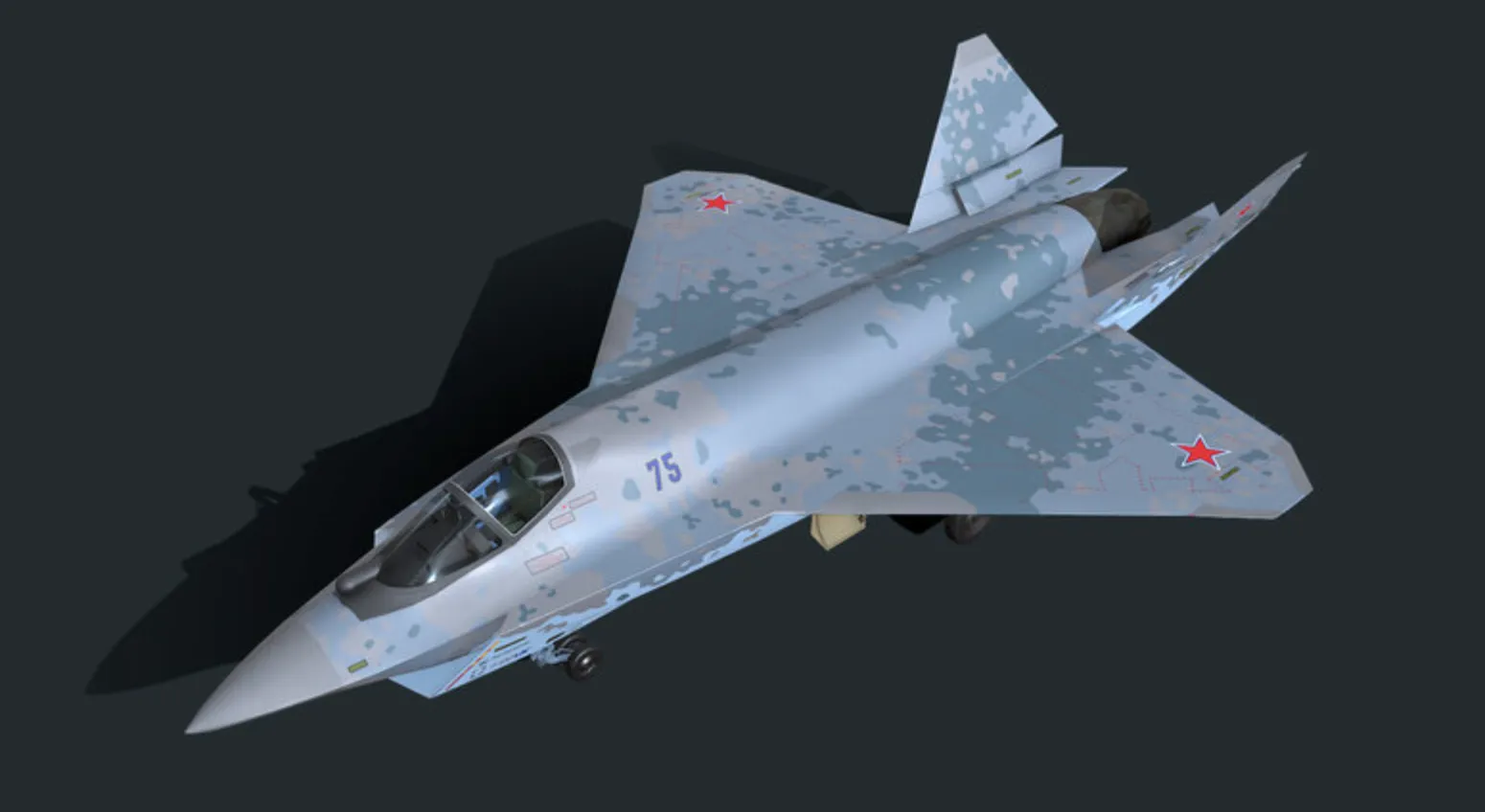
The design process benefited from the extensive research and technical advancements made during the development of the export variant of the Su-57E fifth-generation fighter jet.
Several onboard systems, the cockpit, and other components were directly adapted from the Su-57E, resulting in reduced costs and improved maintenance efficiency.
Measuring 17.5 meters in length and with a wingspan of 11.8 meters, the aircraft is equipped with fifth-generation onboard systems, which are designed to offer high levels of noise resistance and reliability in electronic warfare environments.
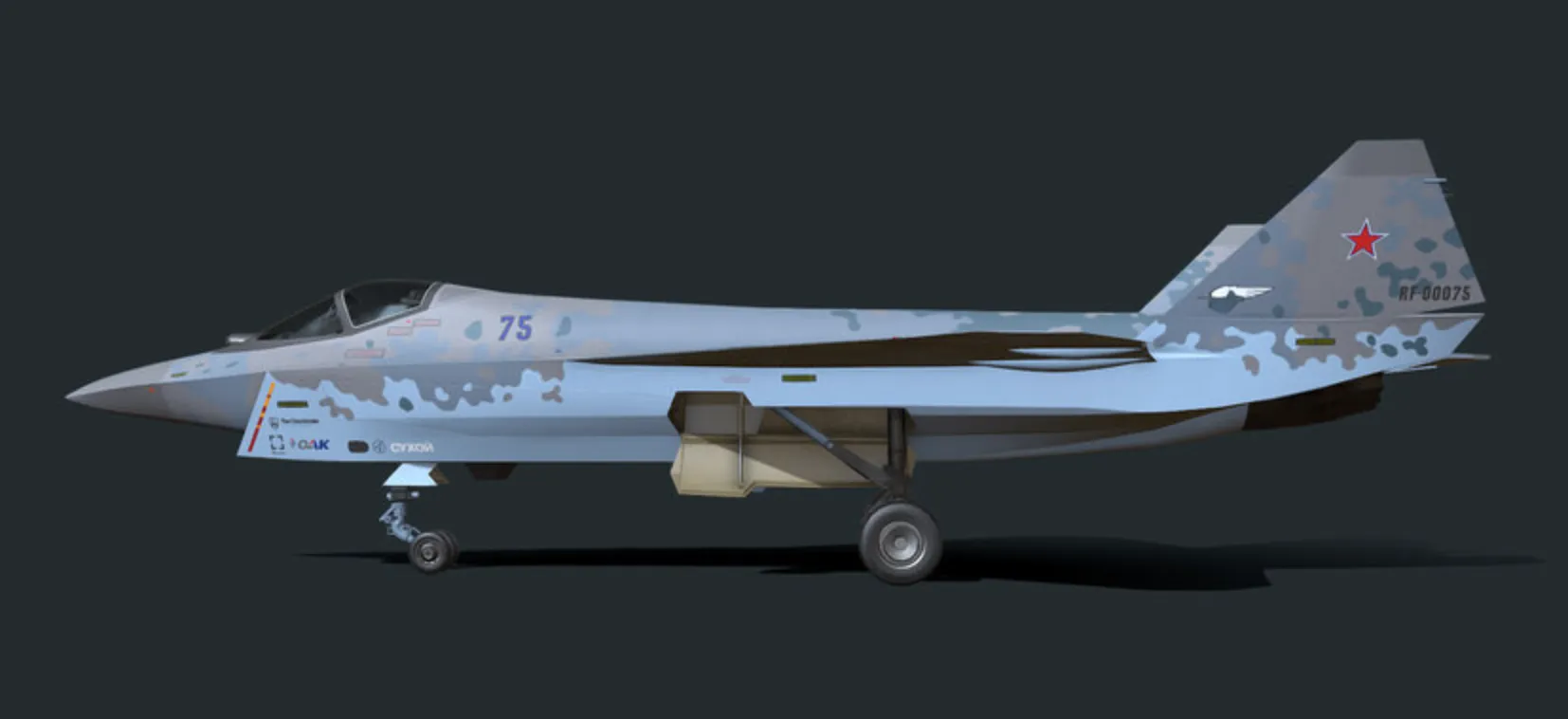
The Sukhoi Su-75 Checkmate is engineered for deployment in challenging conditions, including high-altitude airfields and harsh climates. Its open architecture offers significant adaptability, enabling future upgrades and allowing for cost-effective modifications to meet various mission requirements.
The design of the airframe is focused on ease of maintenance, requiring fewer personnel and minimizing downtime. This feature is expected to enhance the aircraft’s operational readiness and contribute to its overall effectiveness in combat situations.
The aircraft will be made available in multiple configurations: a standard single-seat model, a two-seat version that can be optionally manned, and a fully unmanned variant.
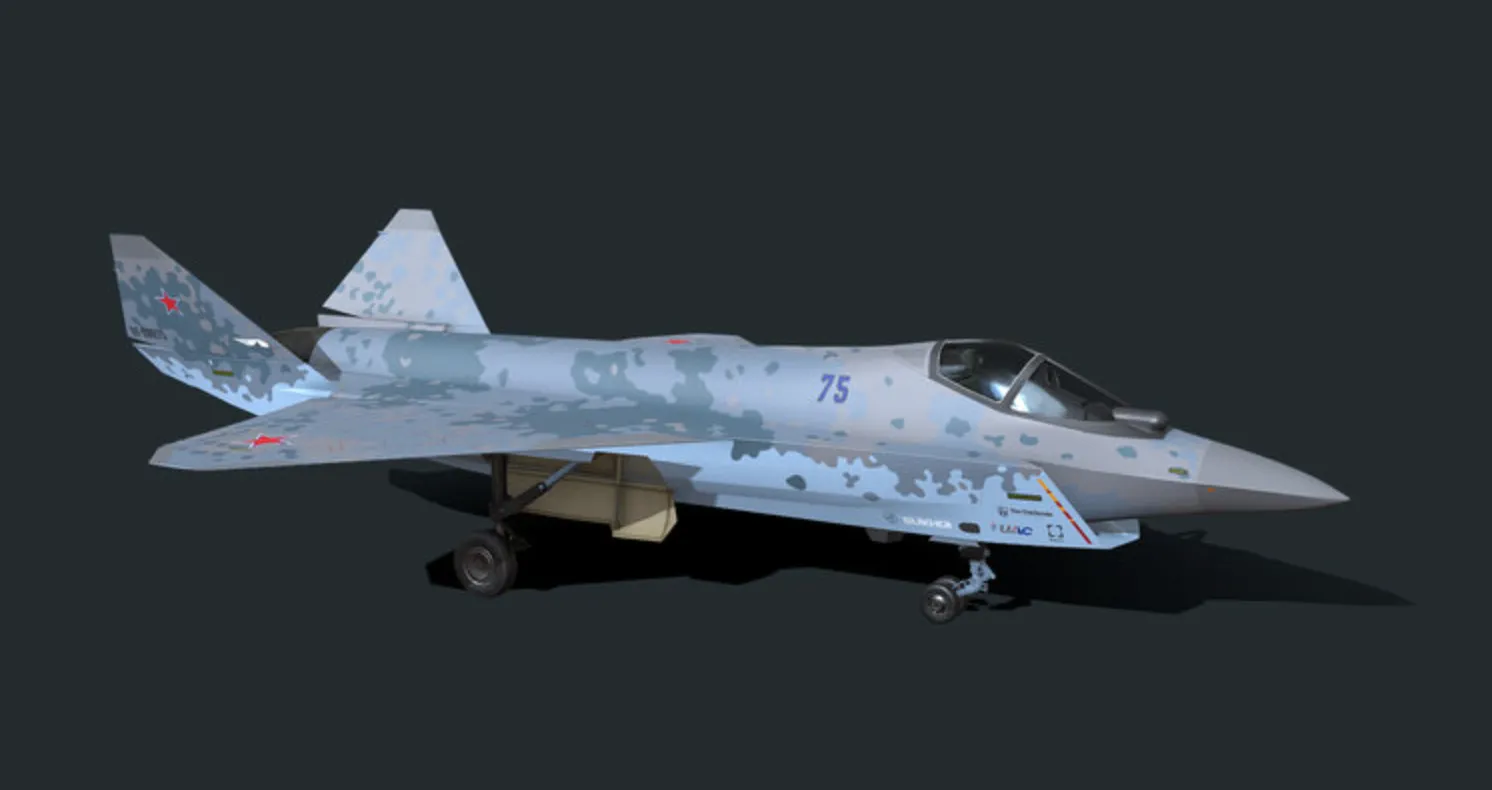
Designed to operate seamlessly with unmanned aerial vehicles (UAVs), the tactical fighter will be part of a networked system. It will have the capability to command small drones, transmitting real-time data about the battlefield situation through advanced communication systems, enabling rapid and coordinated responses.
The Sukhoi Su-75 Checkmate is equipped with a powerful single-engine that delivers thrust ranging from 14,500 kgf to 16,000 kgf. This advanced propulsion system, paired with an auxiliary power unit (APU), allows the aircraft’s subsystems to function autonomously, ensuring enhanced operational efficiency.
Thanks to its superior thrust-to-weight ratio, wing-lift mechanisms, and highly dependable thrust-vectoring engine, the Checkmate demonstrates remarkable take-off and landing performance, even on shorter runways.
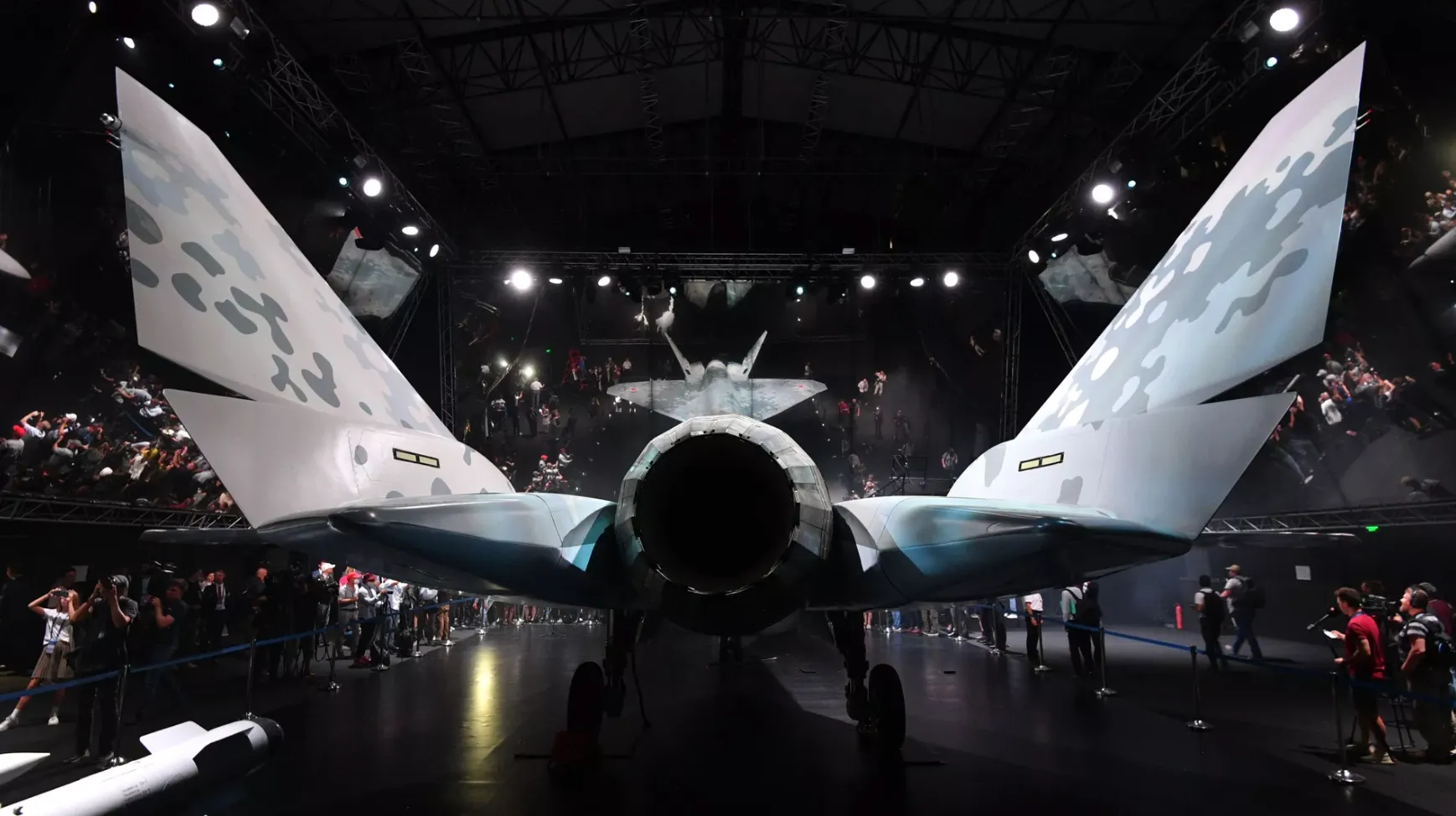
In terms of maneuverability, the jet is capable of withstanding forces up to 8g, making it extremely agile in combat situations. Additionally, the aircraft can sustain supersonic speeds throughout extended flight periods.
The Sukhoi Su 75 Checkmate can reach a top speed of Mach 1.8, equivalent to approximately 2,205 km/h, and boasts an impressive operational range exceeding 2,800 kilometers without the need for external fuel tanks, making it a formidable asset in various mission profiles.
Due to regulations that prohibit capturing images inside the cockpit, NBC News reporter Matt Bodner became the first Western journalist granted access to observe the jet firsthand.
He offered an overview of the cockpit without providing a direct photographic perspective. Bodner noted that the cockpit’s configuration closely resembles that of the Su-57, featuring a modern glass cockpit design.
It is equipped with two primary multi-functional LCDs, each measuring 38 cm (15 inches), similar to the display arrangement found in the Su-35S. Additionally, the cockpit boasts a wide-angle head-up display with a field of view measuring 30° by 22°.
The Checkmate aircraft is engineered to effectively engage and neutralize enemy command posts and critical assets through its advanced armament capabilities. Designed with five concealed weapon bays and 11 external attachment points, the aircraft boasts an impressive combat payload capacity of 7,400 kg.
This multi-role fighter jet is expected to deploy both guided and unguided munitions. Among the guided armaments, it will feature the RVV-MD short-range missile, which has an operational range of approximately 40 km, and the RVV-SD medium-range missile, capable of reaching targets up to 110 km away.
The Sukhhoi Su-75 Checkmate also has the versatility to carry precision-guided munitions aimed at ground targets. Notable among these are the X-38MLE and X-38MTE tactical air-to-surface missiles, which possess a range of 70 km, and the X-58USHKE anti-radar missile, which can engage targets up to 245 km away.
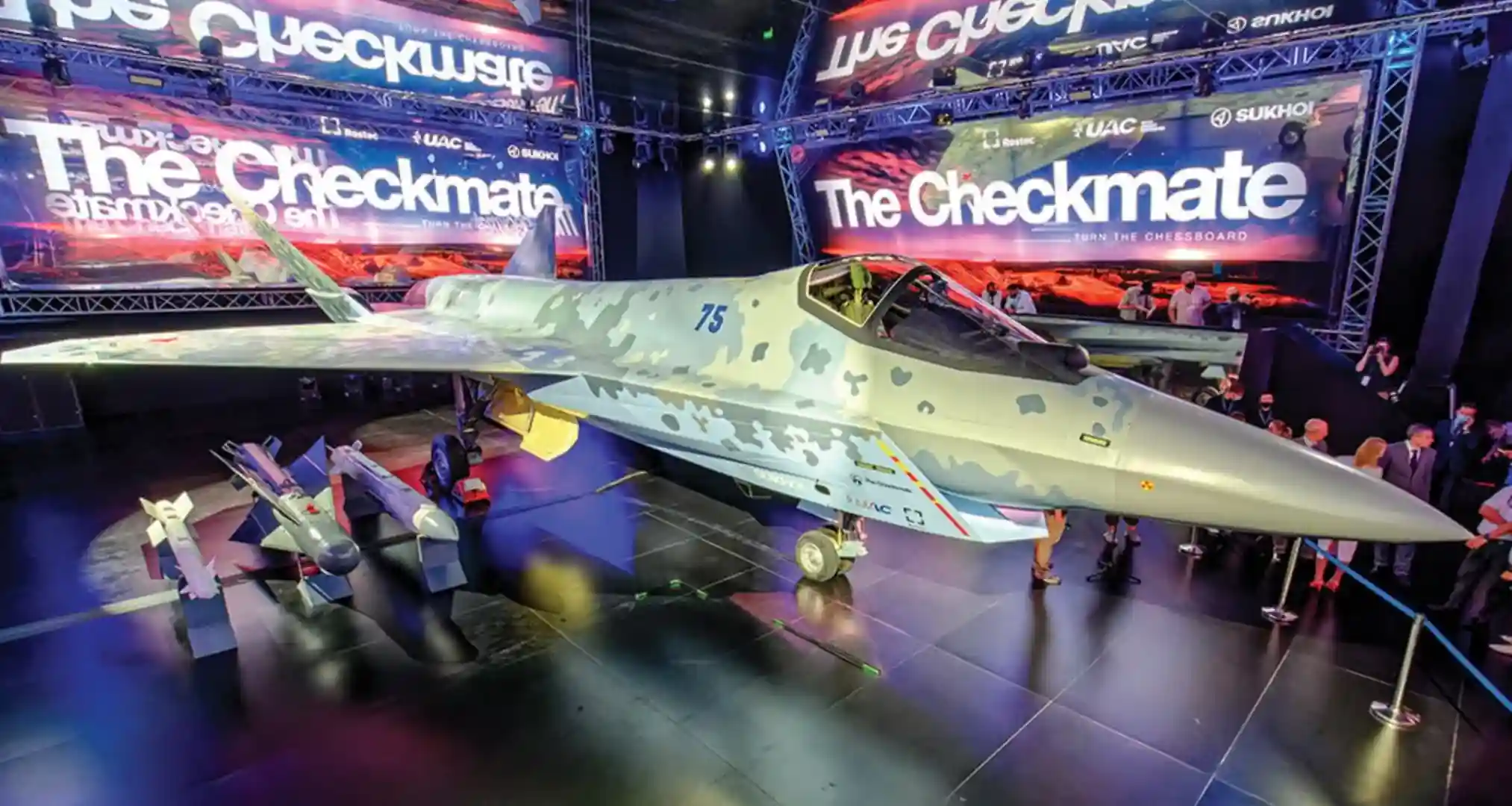
Additionally, the aircraft can utilize the Kh-59MK2 guided missile, extending its strike range to 285 km, as well as the Thunder-A1 precision munition, effective at ranges of up to 120 km.
For maritime operations, the Checkmate is equipped to destroy surface vessels with missiles such as the X-31PD, which has a range of 250 km, and the Kh-35UE, capable of reaching targets at 260 km.
Its weapon bays can also house various guided bombs, including the KAB-250LG-E, K08BE, and K029BE, allowing for precise strikes against ground targets from a safe distance outside enemy air defense systems.
Furthermore, the aircraft’s inner compartment is designed to accommodate unguided munitions, including missiles from the S-8 and S-13 families, alongside a selection of bombs weighing 100 kg, 250 kg, and 500 kg.
This extensive arsenal positions the Checkmate as a formidable asset in modern aerial warfare, enhancing its operational flexibility and lethality on the battlefield.
The Sukhoi Su-75 Checkmate features a cutting-edge multi-band passive detection system, allowing it to engage targets stealthily, minimizing the risk of detection. This sophisticated system enhances the aircraft’s ability to operate effectively in contested environments, making it a formidable presence in modern aerial warfare.
Additionally, the Checkmate is fitted with an Active Phased Array Radar (APAR) that significantly boosts its target tracking capabilities, even in environments plagued by heavy electronic interference.
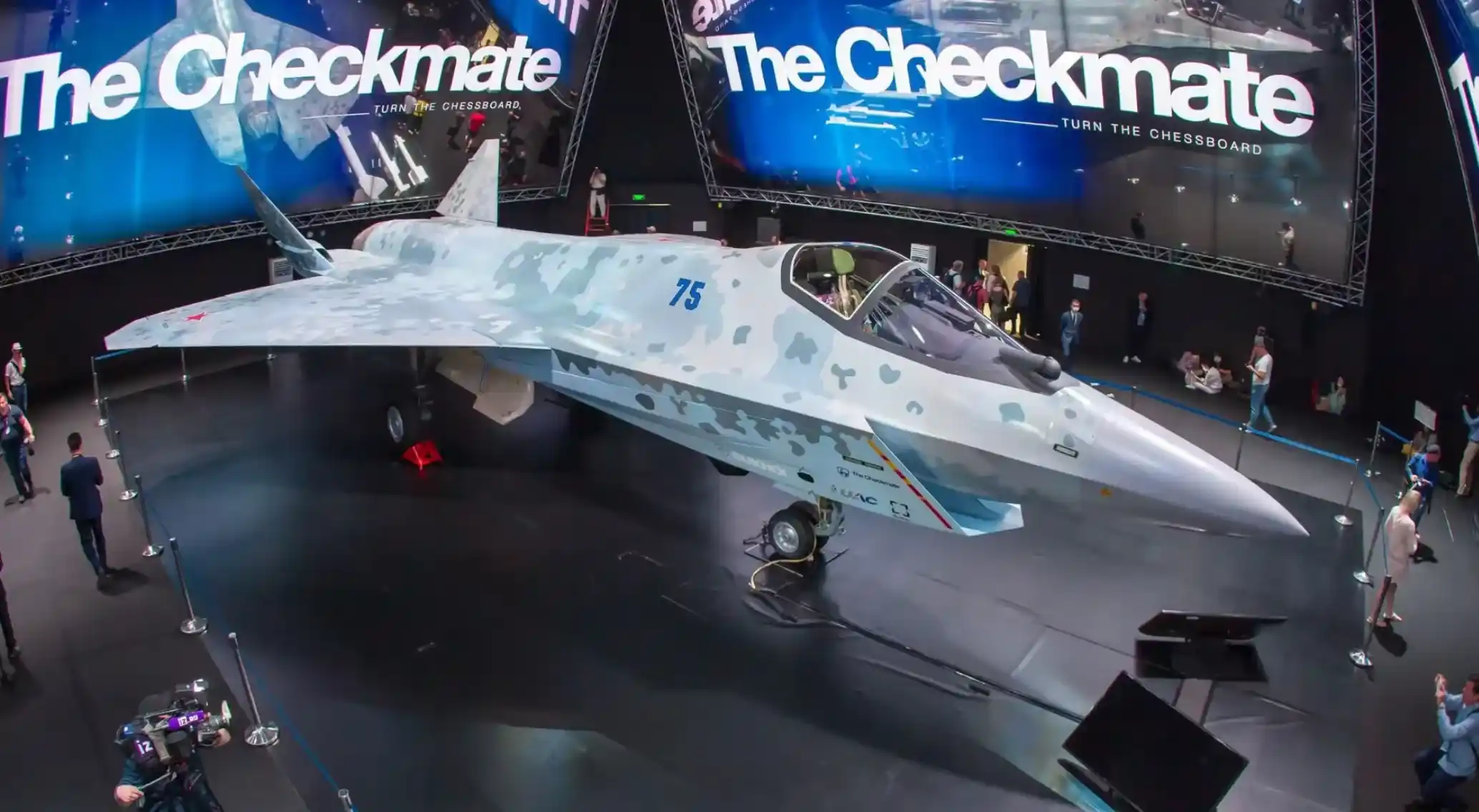
This advanced radar system enables the aircraft to engage as many as six aerial targets simultaneously while maintaining the ability to track up to 30 different targets at once, thereby enhancing its operational efficiency and combat effectiveness.
Moreover, the aircraft is equipped with the KOEPS-75 optoelectronic sighting system, developed by the Russian company Shvabe. This state-of-the-art system is specifically designed for accurately targeting both aerial and ground-based objectives, further amplifying the Su-75’s versatility and precision in combat scenarios.
The combination of these advanced systems positions the Sukhoi Su-75 Checkmate as a leading contender in the next generation of military aircraft.
The Sukhoi Su-75 Checkmate is a fifth-generation stealth fighter jet currently under development by Russia. As of now, Russia does not have any Su-75s in operational service, as the aircraft is still in the prototype stage.
Unveiled in July 2021 by the United Aircraft Corporation, the Sukhoi Su-75 Checkmate is designed to be a cost-effective, single-engine alternative to the Su-57, offering advanced stealth capabilities, high-speed performance, and multi-role adaptability.
However, the production timeline remains uncertain, with the first flight expected around 2024 and initial deliveries possibly by 2026, depending on the progress of development and funding.
Russia’s aim with the Sukhoi Su-75 Checkmate is to appeal to international markets, positioning it as a more affordable option compared to other fifth-generation fighters like the American F-35.
While there has been significant interest from potential buyers such as the UAE and India, no concrete deals have been finalized, and the number of Su-75s that Russia will eventually possess depends largely on future defense budgets and international demand.
Currently, all information about how many Su-75 jets Russia will have remains speculative, pending further developments in the production and testing phases.
Share
Defense Feeds is publication focusing on informing, engaging, and empowering the world by providing accurate information from defense technology.
Powered by Defense Feeds © 2025 – All rights reserved.